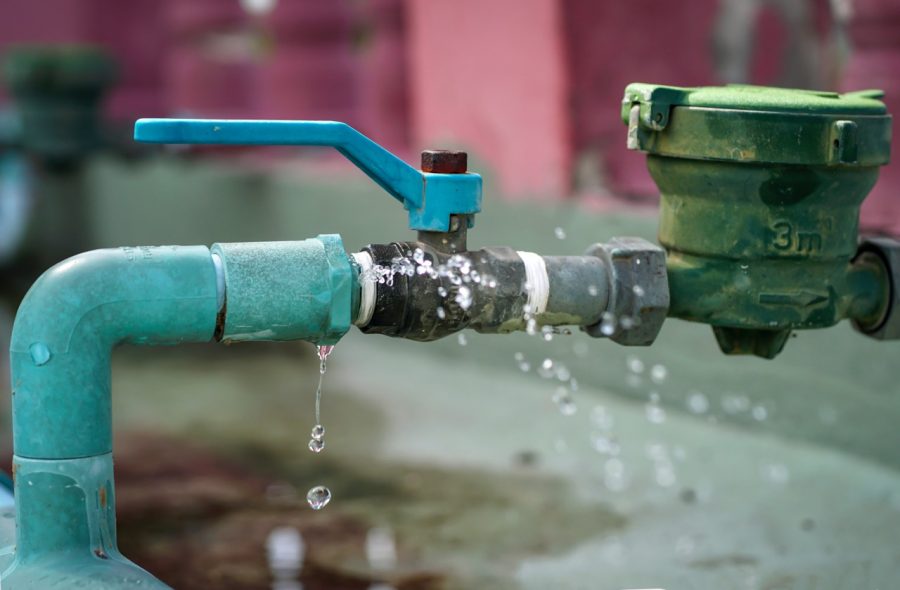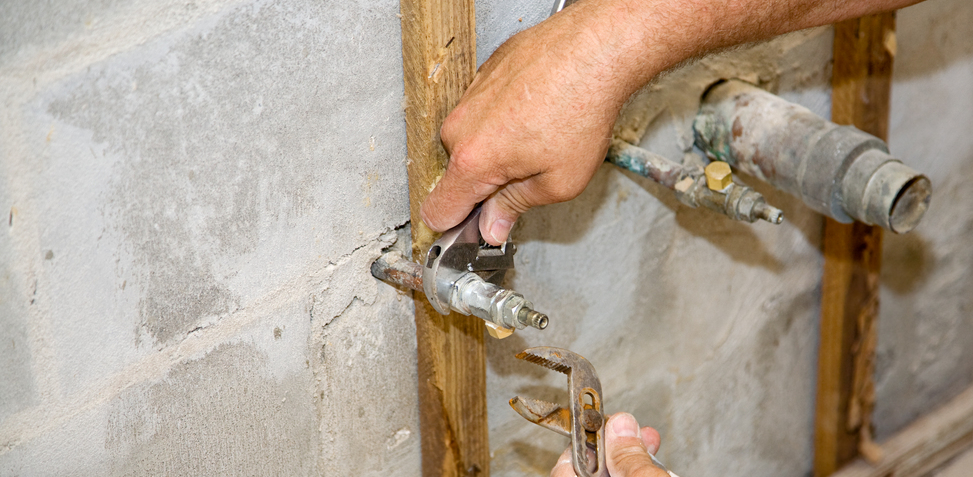Navigating Plumbing Problems in Older Homes: Important Tips
Navigating Plumbing Problems in Older Homes: Important Tips
Blog Article
Listed here on the next paragraphs yow will discover some decent points related to Common Plumbing Problems in Older Homes.

Older homes usually include appeal, character, and history, however they can additionally bring a host of plumbing problems. Whether you're managing maturing pipes, low tide pressure, or leakages, knowing just how to address these usual problems is critical to maintaining a risk-free and useful home. In this guide, we'll explore the regular pipes challenges faced by older homes and supply functional remedies to maintain your plumbing in top shape.
Understanding Common Plumbing Issues
Aging Pipes
One of the most common concerns in older homes is maturing pipes. Relying on the age in which your home was developed, the pipelines may be made from materials that have deteriorated with time, such as galvanized steel, cast iron, or perhaps lead. These products can corrode, end up being fragile, or establish leakages, resulting in water damages and potential carcinogen.
Water Quality Testing
Older pipes can impact the high quality of your water. Conduct a water high quality test to look for pollutants such as lead, rust, or other impurities that might be presented by aging pipelines.
Solutions for Usual Plumbing Issues
Changing Aging Pipes
If your home has old, weakening pipes, think about replacing them with modern materials like copper or PEX. This can be a considerable financial investment, but it will avoid future concerns and enhance the safety and integrity of your plumbing system.
Dealing With Low Water Stress
To deal with low tide stress, beginning by cleansing or replacing old components and getting rid of mineral build-up in the pipes. If the trouble lingers, it might be essential to change areas of rusty pipes.
Fixing and Changing Leaking Pipes
For little leaks, you can utilize pipeline clamps or epoxy putty as a short-lived fix. However, it's ideal to replace dripping pipelines completely to stay clear of additional damage.
Upgrading Components
Updating old fixtures to contemporary, water-efficient designs can enhance your home's plumbing efficiency and minimize water usage. Search for fixtures with the WaterSense label for the very best effectiveness.
Managing Pipeline Deterioration
If your pipelines are worn away, replacing them with corrosion-resistant products like copper, PVC, or PEX is the very best option. Regular examinations and water quality maintenance can assist protect against further corrosion.
Low Tide Stress
If you're experiencing low tide stress, it could be as a result of natural resources, rust inside the pipes, or old components that are no more operating effectively. This can be a significant trouble, particularly in areas like showers and sinks.
Dripping Pipes
Leaks are another regular problem in older homes, frequently caused by corroded or worn-out pipes. Also small leaks can result in substantial water damages, mold development, and increased water bills if not addressed promptly.
Out-of-date Components
Out-of-date pipes components such as faucets, commodes, and showerheads not only look old yet may also be less reliable, susceptible to leakages, or incompatible with modern-day pipes requirements.
Pipeline Rust
Corrosion is a common problem in older pipes, especially those made from galvanized steel or actors iron. Corroded pipes can restrict water circulation, trigger staining, and eventually bring about leakages or pipe bursts.
Examining the Problem of Your Pipes
Checking Noticeable Pipes
Begin by evaluating any kind of visible pipes in your home, such as those in cellars, crawl spaces, or under sinks. Seek indicators of corrosion, leaks, or corrosion, which can show underlying issues.
Checking for Leaks
Look for leaks by examining locations around faucets, commodes, and under sinks. You can also check your water meter prior to and after a period of no water make use of to identify concealed leakages.
When to Call an Expert
While some plumbing issues can be handled with DIY services, there are times when it's finest to call in a specialist. If you're handling major leakages, comprehensive corrosion, or are unsure concerning the condition of your pipes, a qualified plumbing can supply experienced analysis and repair.
Preventive Maintenance Tips
Regular Evaluations
Consistently evaluate your pipes system for signs of damage. Capturing concerns early can stop expensive repair services down the line.
Water Pressure Regulation
Guarantee your water stress is within the suggested range to stay clear of worrying your pipes and components. A plumbing professional can set up a pressure regulatory authority if needed.
Water Top Quality Upkeep
Mount water filters or softeners if your water quality is poor. This can shield your pipes and components from damages triggered by hard water or pollutants.
Aggressive Pipeline Substitute
If your home has older pipes, think about aggressive replacement prior to significant problems occur. This can save you from emergency fixings and water damages.
Final thought
Dealing with plumbing problems in older homes calls for a combination of alertness, preventive maintenance, and timely upgrades. By understanding the common challenges and knowing when to look for professional aid, you can guarantee your plumbing system remains functional and reputable for several years to find.
Common Plumbing Issues in Older Homes and How to Fix Them
Owning an older home in Australia comes with its unique charm and a set of challenges, especially when it comes to plumbing. The Sunshine Coast has many older properties that can harbour plumbing problems that aren t just inconvenient but potentially costly. Here s a look at some common plumbing issues in older homes and expert advice on how to handle them.
Outdated Piping Materials
Many older homes were built with galvanised steel, cast iron, or even lead pipes, materials that are far from ideal by today s standards. Galvanised pipes are prone to corrosion and clogging, while lead pipes pose serious health risks.
How to Fix:
Replacing old pipes is a job for a professional. Upgrading to copper or PVC piping not only enhances water quality and flow but also increases the property s safety and value. If you suspect your home has outdated materials, a licensed plumber can conduct a thorough inspection and recommend the best course of action.
Corrosion and Pipe Degradation
Over time, exposure to water and minerals can cause pipes to corrode, leading to leaks, bursts, and water contamination. Corrosion is especially common in homes over 50 years old.
How to Fix:
Regular inspections can catch early signs of corrosion. If corrosion is found, the affected section of piping often needs to be replaced. For homes with extensive corrosion, a complete plumbing overhaul might be necessary. It s crucial to consult with a plumbing expert to understand the extent of the issue.
Tree Root Intrusion
Older neighbourhoods usually have mature trees whose roots can intrude into pipe lines, causing blockages or damage. This is particularly problematic for sewer lines, where roots seek out water sources.
How to Fix:
A plumber can use a specialised camera to inspect sewer lines for root intrusion. If roots are a problem, methods like root cutting or hydro-jetting can clear the obstruction. In severe cases, part of the pipe may need replacing. Consider root barriers around the piping to prevent future issues.
Inadequate Water Pressure
Low water pressure in older homes can be due to various factors, including corroded water lines, sediment build-up in pipes, or outdated fixtures.
How to Fix:
First, check if the low pressure is isolated to one area or throughout the house. Replacing old fixtures can sometimes resolve the issue. However, if the problem is more widespread, it might be due to sediment or corrosion. Flushing the system or replacing the affected pipes usually restores normal pressure. Again, a professional assessment is advisable.
Outdated Fixtures
Older homes often feature fixtures that are not only visually dated but functionally inefficient. This includes everything from toilets and taps to showerheads and washing machine hoses.
How to Fix:
Updating these fixtures can improve both water efficiency and the aesthetic appeal of your home. Modern fixtures are designed to conserve water, which can significantly reduce your water bill and lessen your environmental impact.
Conclusion
Maintaining the plumbing in an older home requires a proactive approach. Regular checks and updates are key to preserving these beautiful properties. If you re facing plumbing issues in your older home, it s best to call on experienced professionals like Green & Gold Plumbing & Gas. With the right expertise, even the most daunting plumbing problems can be resolved, ensuring that your home s character is maintained while its functionality is enhanced.
https://gandgplumbing.com.au/common-plumbing-issues-in-older-homes-and-how-to-fix-them/

Do you appreciate more info about Plumbing Problems In Old Homes? Put a short review down below. We'd be happy to listen to your views about this write up. In hopes that you come back again later on. Those who liked our blog posting please consider to pass it around. Thanks so much for going through it.
Appointment Report this page